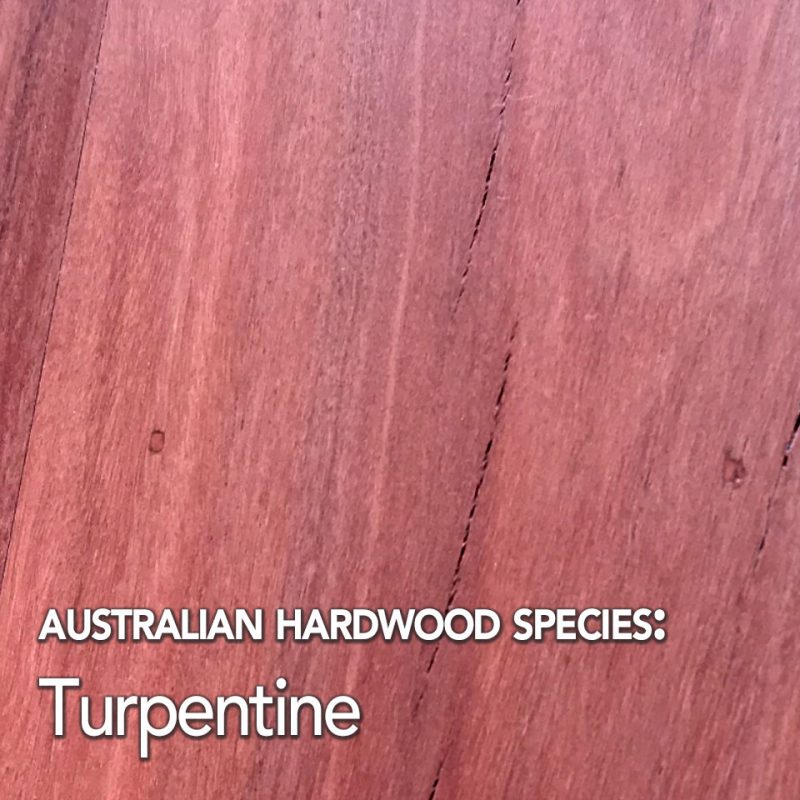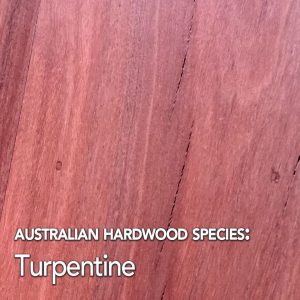Hardwood Timber Species Data
Hardwood Species: Turpentine (Syncarpia glomulifera)
Species Description
Native to New South Wales and Greenland, the turpentine tree is, strangely enough, not used as a source for turpentine oil. Rather, it shares a name thanks to the smell of turpentine released when its leaves are crushed. Reaching as high as 60 meters and routinely growing on heavier soils, turpentine is a large, straight-trunked tree. The trunk diameter can approach 1.5 meters. Its thick bark is fibrous and dark brown with deep vertical furrows. The tree produces cream-coloured flowers from August through December. Hardy and adaptable, turpentine trees make for excellent shade in park settings.
The Turpentine tree is thought to be able to live for up to 500 years. They are popular with pollinators like native and European honeybees, the grey flying fox, the little red flying fox, and bird species such as the noisy miner and rainbow lorikeet. Turpentine commonly grows alongside other popular timber trees such as the grey ironbark, the tallowwood, the brush box, the spotted gum, and others.
Turpentine timber is highly resistant to termites and marine invertebrates. Also incredibly durable thanks to its Janka hardness rating of 12, and is highly resistant to fire.
The colour of Turpentine timber wavers from deep chocolate brown tones to pale to dark reddish browns. Its coarse yet even texture and straight grain makes it ideal for solid timber flooring and parquetry. While its extreme durability makes it a natural for decking as well.
Physical Properties
Dry Density: range 930 kg/m³
Janka Hardness: 12.0 kN
These properties are only a guide, as turpentine timber is a natural product there will be variations within any species. The Janka Dry Hardness rating measures the hardness of the wood. The higher the number the harder the wood.
Use Turpentine hardwood in your next project
-
80mm x 19mm Floorboards
Turpentine Solid Hardwood Flooring 80mm x 19mm
Rated 0 out of 5$132.00 – $146.96 Select options -
130mm x 19mm Floorboards
Solid Turpentine Hardwood Flooring 130mm x 19mm
Rated 0 out of 5$143.55 – $171.82 Select options
If you would like to use Turpentine in your next project and need assistance with either choosing the correct flooring panels or the installation of your next flooring project then please get in touch with one of our flooring specialists using the form below.
We also offer a more personalised service for those looking for renovation advisory where our team come to your location and help you choose the best species and style to fit the room.
Mr Timber Flooring would love to hear from you!


